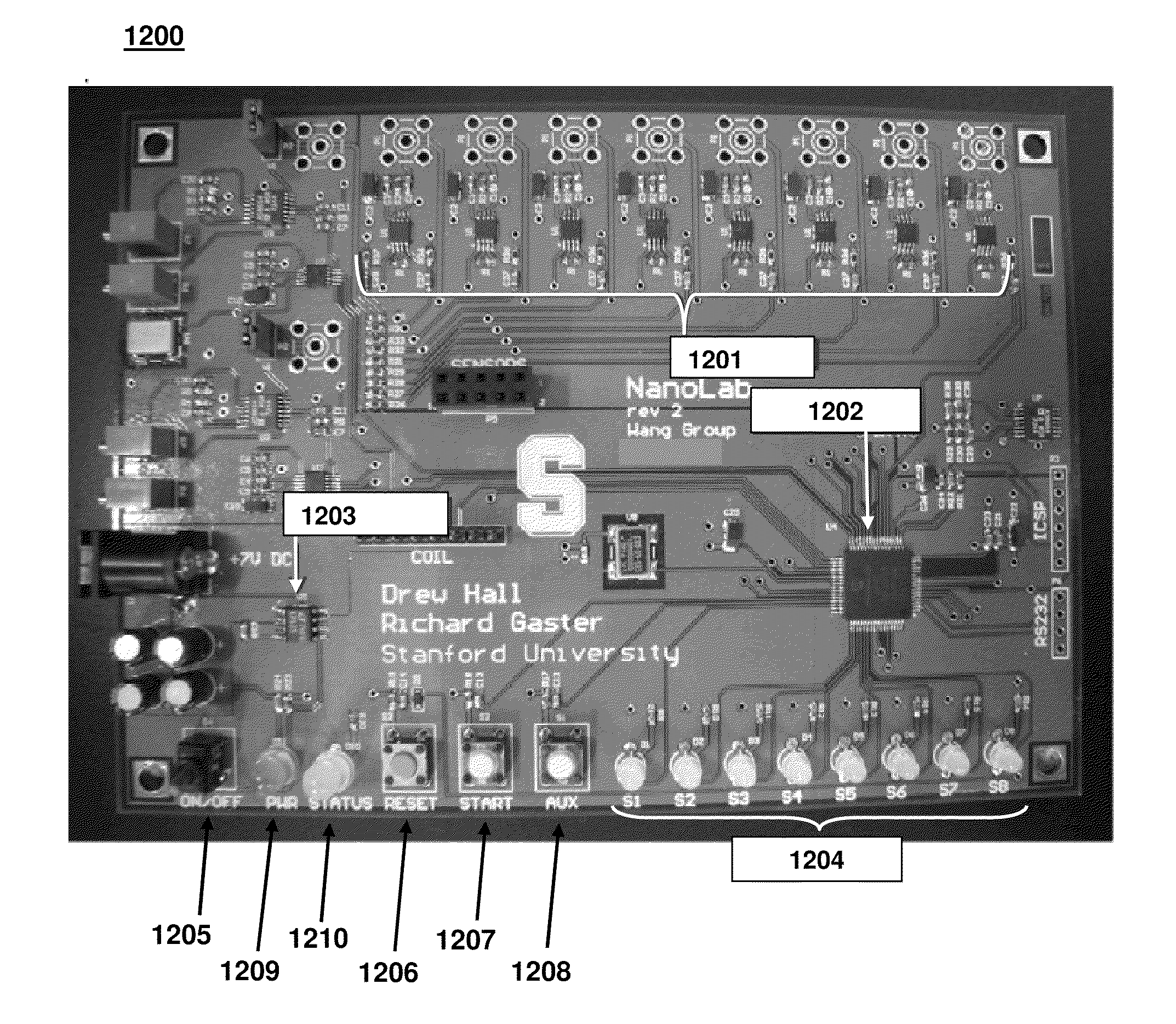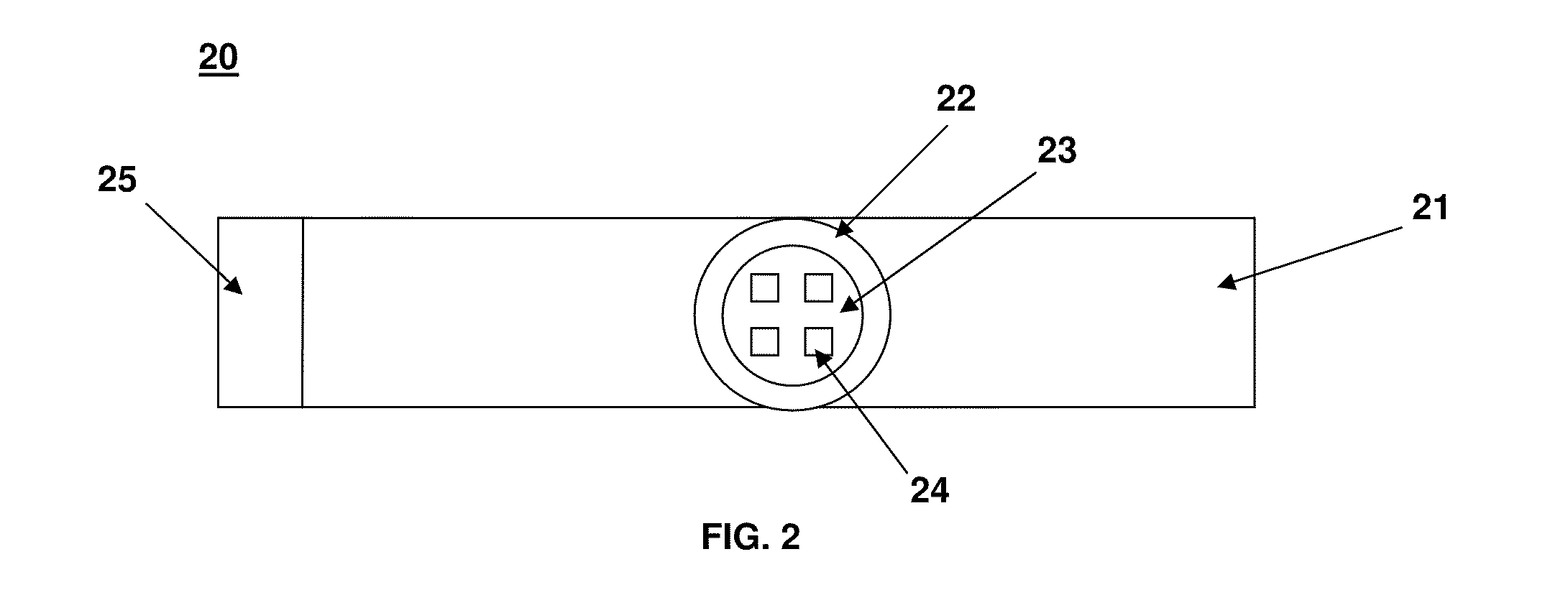Methods and devices for detecting the presence of an analyte in a sample
a technology for detecting the presence of analyte in samples, applied in the direction of analytical using chemical indicators, laboratory glassware, instruments, etc., can solve the problems of impracticality, limited access to medical diagnostic laboratories and well trained technicians, and time-consuming and laborious washing steps for analyte detection platforms
- Summary
- Abstract
- Description
- Claims
- Application Information
AI Technical Summary
Benefits of technology
Problems solved by technology
Method used
Image
Examples
example 1
[0188]The cross-reactivity of an anti-epidermal growth factor receptor (EGFR) antibody to a panel of 20 unique target proteins was examined. After selectively capturing each protein via antibody surface capture ligands, magnetic proximity labels were added. The GMR signal was monitored in real time. There was no significant rise in the GMR signal upon addition of sample and magnetic proximity labels (FIG. 15). The biotinylated anti-EGFR capture probes were added next. Once the capture probes were introduced, the magnetic proximity labels were bound to the sensor surface within the detection range of the proximity sensor and in high enough density to be detected by the underlying GMR sensor (FIG. 15). Each sensor in the array was individually addressable and monitored in real-time. Therefore, upon sequential addition of different capture probes at different time points, it was possible to determine the specific antibody capture probe that was cross-reacting in a panel of antibodies. ...
PUM
| Property | Measurement | Unit |
|---|---|---|
| distance | aaaaa | aaaaa |
| distance | aaaaa | aaaaa |
| distance | aaaaa | aaaaa |
Abstract
Description
Claims
Application Information
 Login to View More
Login to View More - R&D
- Intellectual Property
- Life Sciences
- Materials
- Tech Scout
- Unparalleled Data Quality
- Higher Quality Content
- 60% Fewer Hallucinations
Browse by: Latest US Patents, China's latest patents, Technical Efficacy Thesaurus, Application Domain, Technology Topic, Popular Technical Reports.
© 2025 PatSnap. All rights reserved.Legal|Privacy policy|Modern Slavery Act Transparency Statement|Sitemap|About US| Contact US: help@patsnap.com



